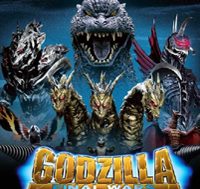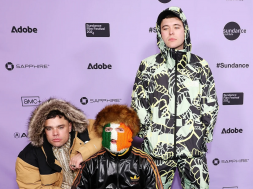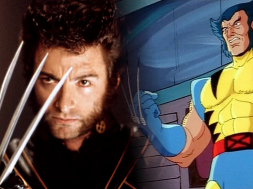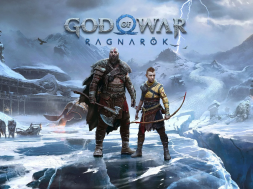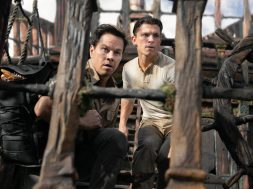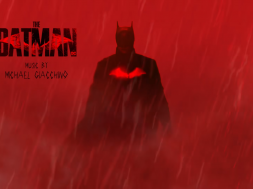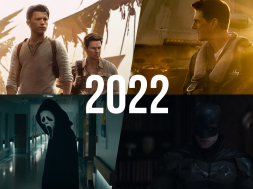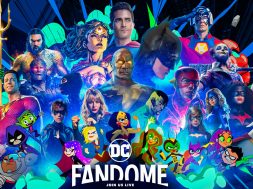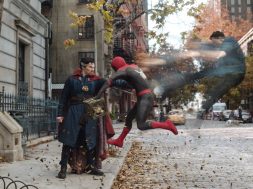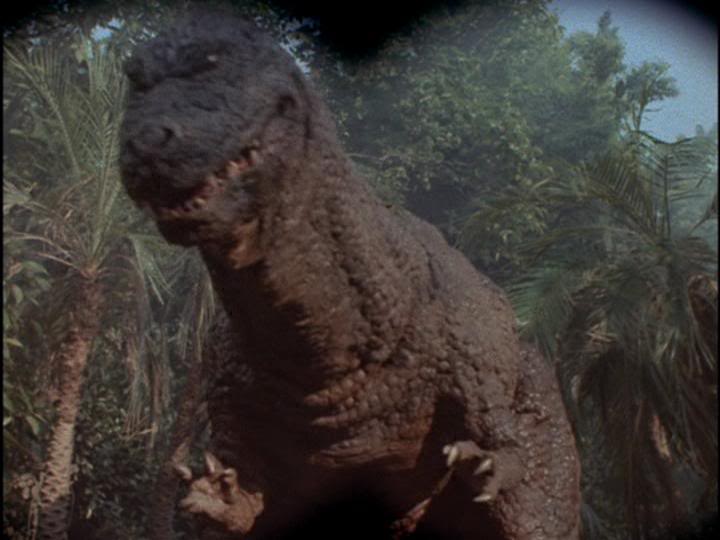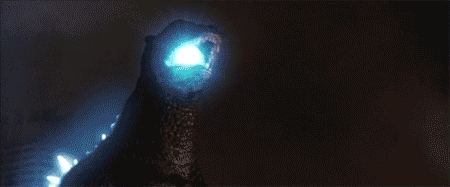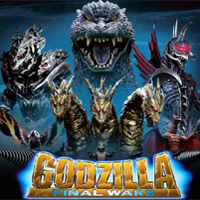
At the end of Part 3, we left off with Toho having been put into somewhat of a sticky position. Despite consistent numbers up until that point, Godzilla’s popularity had declined severely with The Terror of Mechagodzilla. The franchise had seen it’s lowest attendance in theaters to date and it became obvious it was time to take a break and regroup to find out where to go next. But where do you go after 21 years and fifteen films? What do you do to re-invigorate a character as already iconic as Godzilla without removing or affecting what made audiences fall in love with them in the first place? Why, you take an extended break and come back with a new film that retcons (retells and changes a characters history or timeline) almost all that came before it and, essentially, start from scratch. The Return of Godzilla marked not only the mighty beast’s 30th anniversary, but also a throwback to what started it all back in 1954.
 Bringing in an outside director, Koji Hashimoto, to helm the feature, The Return of Godzilla is a direct sequel to the 1954 original – ignoring all the films and story-lines created in the meantime. Equipped with a higher budget, 9 years in between to grow demand and the valiant return to the darker tones and seriousness of films past, this looked to really get the big G back on track and have audiences finally interested in it’s misadventures once again. It worked, but not quite how they wanted it to. Cultural context plays a large role here, as the movie was released in 1984, a decade now almost infamous for the ridiculous action and special effects that reached prominence within film. The Return of Godzilla still plays very much the same as Godzilla, with the monster attacking the city of Tokyo and there being a great sense of fear and unease with the monster feeling like a threat and the overall tone being a meld of horror and action without leaning too far towards one or the other… Almost. Much like Aliens to Alien, Terminator 2 to Terminator and Dawn of the Dead to Night of the Living Dead, Return has to take the action a step higher and change the formula, and what’s an easy way to change the game with a giant dinosaur? Make a giant human-made tank for it to fight. Simple. Oh, and introducing nuclear attacks as an imminent threat.
Bringing in an outside director, Koji Hashimoto, to helm the feature, The Return of Godzilla is a direct sequel to the 1954 original – ignoring all the films and story-lines created in the meantime. Equipped with a higher budget, 9 years in between to grow demand and the valiant return to the darker tones and seriousness of films past, this looked to really get the big G back on track and have audiences finally interested in it’s misadventures once again. It worked, but not quite how they wanted it to. Cultural context plays a large role here, as the movie was released in 1984, a decade now almost infamous for the ridiculous action and special effects that reached prominence within film. The Return of Godzilla still plays very much the same as Godzilla, with the monster attacking the city of Tokyo and there being a great sense of fear and unease with the monster feeling like a threat and the overall tone being a meld of horror and action without leaning too far towards one or the other… Almost. Much like Aliens to Alien, Terminator 2 to Terminator and Dawn of the Dead to Night of the Living Dead, Return has to take the action a step higher and change the formula, and what’s an easy way to change the game with a giant dinosaur? Make a giant human-made tank for it to fight. Simple. Oh, and introducing nuclear attacks as an imminent threat.
Combining satellite guided nuclear missiles and Super-X, a super-military-hovercraft-tank-thing, Return provided a welcome re-invigoration of the character and the series, but still keeping a light-hearted approach. Featuring Soviet, Japanese and American military in the nuclear war sub-plot of sorts and having the big ‘zilla fight a giant tank before being encased in lava, it was very obvious that ‘serious’ Godzilla films were a thing of the past. Despite making a neat profit in the box office, The Return of Godzilla got mostly negative reviews, even though the American version featured a re-cut with Raymond Burr shoe-horned in, because that worked SO well the first time. Return did give the kaiju genre the kick it needed at the time, and with a fresh continuation to work from, the sequels came hard and fast through-out the nineties.
Beginning four years later, in 1989, Godzilla would be back to facing off against giant monsters in a battle for the heavyweight championship of the world and rights to destroying Tokyo in peace. Starting with fresh opponent Biollante, the King of the Monsters would face King Ghidorah, Mecha-King Ghidorah, Godzillasaurus (not kidding!), Mothre, Battra, Rodan and one of it’s most legendary adversaries, Destroyah, over the course of 6 films in as many years. The updated special effects, better designed suits, and heightened budget finally gave audiences a taste of what kaiju films were capable of and how momentous big monsters on the big screen could truly. Toho even decided to take a break at this junction to allow America to produce their own Godzilla film – finally the dream would be realized and the lizard king would be realized with a gigantic budget and the best special effects…. NOT!
I’m sorry, alright, I’m sorry. I don’t want to talk about the 1998 Godzilla, but I have to, it’s a big part of Godzilla’s history, specially to western audiences. It was my first Godzilla film, I remembering seeing it in the theater and not realizing what I had just watched. This film has truly not aged well; miss-matched casting, poor scripting, a story which involves killing the dinosaur just over half-way through and sloppy special effects make this a very dark stain in the history of the monster king, possibly the darkest. One positive thing that it did provide us with, however, is a sequel cartoon that actually provided the epic fight scenes that were synonymous with the franchise up until that point. With the worm guy (Broderick’s character) having a recurring role with a much deeper voice and a slew of lovable, more interesting characters, Godzilla: The Series does go someway to ‘fixing’ the damge.Running for forty episodes, the animation really holds up to this day, too, and I would advise avoiding the Matthew Broderick vehicle (though I love him) and going straight to this series if you REALLY need to humor some western made Godzilla.
After the disaster that was the 1998 film, Toho decided to get back behind the steering wheel for Godzilla 2000, another reboot. Proving that there’s still life in the old lizard yet, they decided to go a the dystopian route, with Y2K being a large focal point. Godzilla has been terrorizing Tokyo for years and years, since his début in fact, and now some aliens have come along to see if they can’t deal with him. Cue a mutant clone called Orga and a fight ensues and the film plays out how you expect, and want, a Godzilla film to play out. One of the core differences for this new, modern series, dubbed the ‘Millenium’ series, is that Godzilla does not die at the end of each film. They just skip his constant re-birthing and get straight to the action.
For four straight films, Godzilla deals with Megaguirus, Mothra, King Ghidorah, Baragon and Mechagodzilla (now called Kiryu and piloted by a female human). While the production values are high and the stories suitably ropey, the timelines get strange because they essentially add sequels to previous story-lines, Mechagodzilla is part of its original continuation and what not. You’re better off abandoning wanting to get a complete story because, honestly, ultimately, it’s all about the monsters kicking the snot out of each other, and kick the snot out of each other they do.
This, of course, leads us to the ultimate kaiju film. The pinnacle of Godzilla’s career and the royal rumble of big monster movies. Directed by Ryuhei Kitamura and released in 2004, Godzilla: Final Wars marked Godzilla’s 50th anniversary and the last Toho production to date. Essentially. They put most of the most famous kaiju into one film and decided ‘let’s have at and make them all scrap. It’ll be deadly!’ It is deadly. The feature feels like a genuine celebration of what Toho created with their kaiju creations and the pinnacle of how far they’ve come production wise and how far the King of the Monsters has come. I’d go into describing Final Wars, but honestly, if you’re going to watch ANY Godzilla film, after the original, watch this one. It is absolutely incredible. It’s cheesy, it’s ridiculous and it is absolutely fun. Do it. Do it NOW.
And that brings us up to date with Godzilla 2014. To say I’m excited is an understatement. Will this finally be the big budget Godzilla film we always wanted? Sure looks like it. Bolstered with the likes of Bryan Cranston sure helps matters too. Stay tuned for my review, and thanks for reading!
